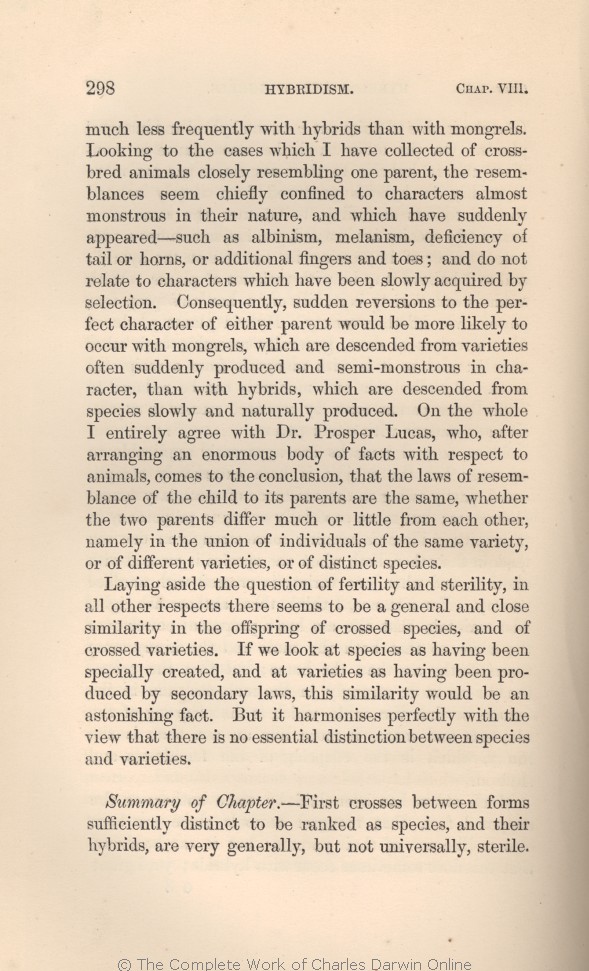much less frequently
with hybrids | with hybrids 1859 1860 1861 | | with them 1866 1869 | with hybrids 1872 |
| appeared— 1859 1860 1861 1872 | | appeared—such 1866 1869 |
| such 1859 1860 1861 1872 | such 1866 1869 |
| by 1859 1860 1861 | | through 1866 1869 1872 |
| Consequently, 1859 1860 1861 1866 1869 |
| A tendency to 1872 |
| would 1859 1860 1861 1866 1869 | | would, 1872 |
| be 1859 1860 1861 1866 1869 |
| also, be much 1872 |
| more 1859 1860 1861 1866 1872 | | much more 1869 |
| whole 1859 1860 1861 | | whole, 1866 1869 1872 |
| much 1859 1860 1861 | | little 1866 1869 1872 |
| little 1859 1860 1861 | | much 1866 1869 1872 |
| namely 1859 1860 1861 1866 1869 | | namely, 1872 |
|
|
Laying aside | Laying aside 1859 1860 1861 1866 | | Independently of 1869 1872 |
|
Summary
|
Summary
1859 1860 1861 | |
Summary
1866 1869 1872 |
|
of
1859 1860 1861 | |
of
1866 1869 1872 |
|
Chapter
.—
1859 1861 |
|
Chapter
— .
1860 |
|
Chapter
. 1866 1869 |
|
Chapter
. 1872 |
|
First crosses between
forms | forms 1859 1860 1861 1866 1869 | | forms, 1872 |
|









